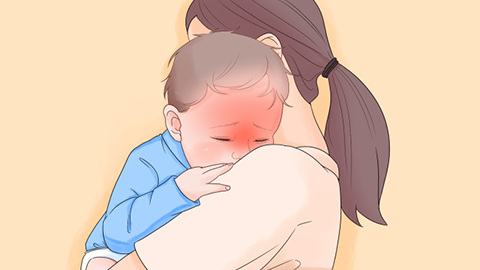How to manage fever and chills in children
Generally speaking, fever refers to an elevated body temperature. Fever accompanied by chills in children may be caused by activation of the body's temperature regulation mechanism, emotional tension or fear, upper respiratory tract infection, acute gastroenteritis, pneumonia, and other reasons. Treatment options include general care and medication therapy, as directed by a physician. Specific explanations are as follows:

1. Activation of the thermoregulatory mechanism
When a child's body temperature rises, the body's temperature regulation center initiates a series of physiological responses, including shivering, to generate heat and maintain thermal stability. During shivering, the muscles contract and relax rapidly, producing heat. In daily life, ensure the child stays warm, avoid prolonged exposure to cold environments, improve the child's physical condition, enhance immunity, and reduce the likelihood of fever.
2. Tension and fear
Under emotional stress or fear, children may experience autonomic nervous system dysfunction, which can lead to abnormal function of the thermoregulatory center and cause chills. It is important to monitor the child's psychological state, provide a safe and stable living environment, promptly comfort the child's emotions, and reduce anxiety and fear.
3. Upper respiratory tract infection
Upper respiratory tract infections are caused by viral or bacterial infections and may trigger systemic inflammatory responses, leading to elevated body temperature. The thermoregulatory center may also initiate a shivering response. Symptoms may include coughing and a runny nose. Under a doctor's guidance, medications such as pediatric Chiao-Chiao Qingre granules, ibuprofen suspension, and pediatric cough syrup may be used for treatment.
4. Acute gastroenteritis
Acute gastroenteritis may be caused by infection with bacteria, viruses, or parasites, which can lead to gastrointestinal inflammation and elevated body temperature. The thermoregulatory center may also respond with shivering. Symptoms may include diarrhea and vomiting. Patients may take oral rehydration salts (Type I), smectite powder, and Bifidobacterium triple live powder as directed by a physician.
5. Pneumonia
Pneumonia may be caused by infection with bacteria, viruses, or mycoplasma. Inflammatory stimulation may lead to fever and chills in children. Symptoms may also include sputum production and difficulty breathing. Patients may take medications such as cefixime granules, dextromethorphan hydrobromide syrup, and azithromycin dry suspension under medical guidance.
In daily life, maintain a balanced diet, ensure adequate nutrient intake, eat more foods rich in vitamins and minerals, strengthen the child's immunity, and reduce the risk of infections.




